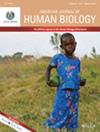Multi-Scalar Spatial Analysis of Social Determinants of Undernutrition in Schoolchildren in Tucumán, Argentina
Abstract
Introduction
This study analyzes the spatial clustering and socioeconomic and demographic determinants of child undernutrition in Tucumán, Argentina.
Methods
We conducted an observational, cross-sectional study using data from over 11 000 school-aged children in Greater San Miguel de Tucumán, the largest metropolitan area in the Northwestern Greater Argentina (NGA) region. We examined undernutrition at the population level—focusing on stunting, wasting, and general undernutrition—by analyzing both individual-level factors (age, sex, birth weight, and preterm birth) and neighborhood-level factors (percentage of households with unmet basic needs and the presence of informal settlements). Spatial cluster analysis was performed using SaTScan to detect geographic patterns of stunting and wasting. We then described and compared area-level social determinants within the identified clusters. Statistical analyses were carried out using SPSS version 25, and mapping was conducted with QGIS version 3.10.
Results
In our study, about 6% of schoolchildren presented undernutrition of some kind, with similar percentages for stunting (2.77%) and wasting (2.98%). Multivariate analysis reveals these associations with stunting: age, low birth weight, preterm birth, and residence in high-poverty neighborhood; wasting was associated with preterm birth and residence in high-poverty neighborhood. Cluster analysis shows that undernutrition is concentrated spatially, in areas around informal settlements that lack clean water and modern sewers and have lower educational levels.
Conclusion
Our findings underscore the value of a multi-scalar and ecological approach to child undernutrition in rapidly growing urban areas. This study contributes to the growing body of evidence on nutritional inequalities and highlights the relevance of spatial justice in the development of targeted public health interventions.

 求助内容:
求助内容: 应助结果提醒方式:
应助结果提醒方式:


